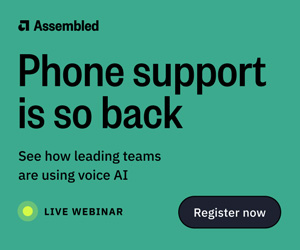In the fast-paced world of customer service, delivering satisfaction is key. Contact centres, the frontline of customer interaction, have long relied on post-call surveys to gauge a range of metrics like customer satisfaction, customer effort and Net Promoter Scores (NPS), in a bid to try and unearth what their customers really think.
It could be argued that many of the most important people expected to use these surveys would actually be happier without them altogether – providing a viable alternative is available. Let us explain…
The Problem With Post-Interaction Surveys
Customers Hate Surveys
Surveys are everywhere, eliciting a collective sigh from customers. Survey fatigue sets in as they’re bombarded with requests for feedback at every turn.
Adding insult to injury, the lack of action on companies’ part can often feel like the process is futile. After all, what’s in it for them?
Customers invest time and energy into providing feedback, only to see little to no change or resolution of issues.
The surveys themselves often contribute to the frustration, being lengthy, monotonous, and repetitive.
Agents Hate Surveys
Twenty surveys a month might seem manageable, but in reality, they hardly scratch the surface of an agent’s workload.
Yet, these few surveys hold immense power – they can make or break a month for an agent, often impacting bonuses and morale.
Also, agents often find themselves at the mercy of factors beyond their control. Policies, products, or processes can have a massive impact on customer interactions, unfairly leaving agents to deal with the fallout.
Finally, there’s the issue of accuracy. Scores without context or supporting comments can be misleading at best and at worst inaccurate, leaving agents in the dark about where they stand.
Difficulty Using Survey Data
Survey volumes are often too low, meaning the outcomes are not representative and conclusions are not robust.
Research suggests that only 1 in 26 people will complain. The rest will churn. This means that relying solely on survey data may provide a skewed view of customer satisfaction.
There’s also often a disconnect and inconsistency across different departments when it comes to survey implementation.
Each department may have its own approach or even use different survey solutions altogether, leading to fragmented data and insights.
What’s more, surveys typically miss a significant portion of valuable feedback shared by customers during various interactions.
This oversight represents a missed opportunity for organizations to truly understand and address customer needs.
Finally, there’s a risk that survey results become the focal point of employee discussions rather than the customer experience.
This is especially true when survey outcomes are tied to bonuses or incentives, potentially incentivizing employees to prioritize survey scores over authentic customer interactions.
The dissatisfaction surrounding post-call surveys is varied, impacting agents, customers, and contact centre management alike.
Agents resent the disruption to their workflow and the added pressure to meet performance metrics, while customers view post-call surveys as intrusive and irrelevant.
Despite these challenges, contact centre management continues to tolerate post-call surveys due to their perceived value as a tool for gathering customer feedback and measuring performance.
The Alternative to Post-Call Surveys
It may not come as a surprise to find that artificial intelligence (AI) is revolutionizing this landscape, presenting a compelling argument for automating quality analysis and reimagining the traditional survey-driven approach.
Traditional surveys capture only a fraction of customer feedback, often overlooking subtle cues and underlying trends.
AI algorithms, on the other hand, excel at processing large datasets and identifying correlations, enabling contact centres to gain deeper insights into customer preferences, behaviors, and pain points.
So, will AI spell the end of the post-interaction survey?
Author: Guest Author
Published On: 18th Jun 2024 - Last modified: 23rd Oct 2024
Read more about - Guest Blogs, EvaluAgent



































